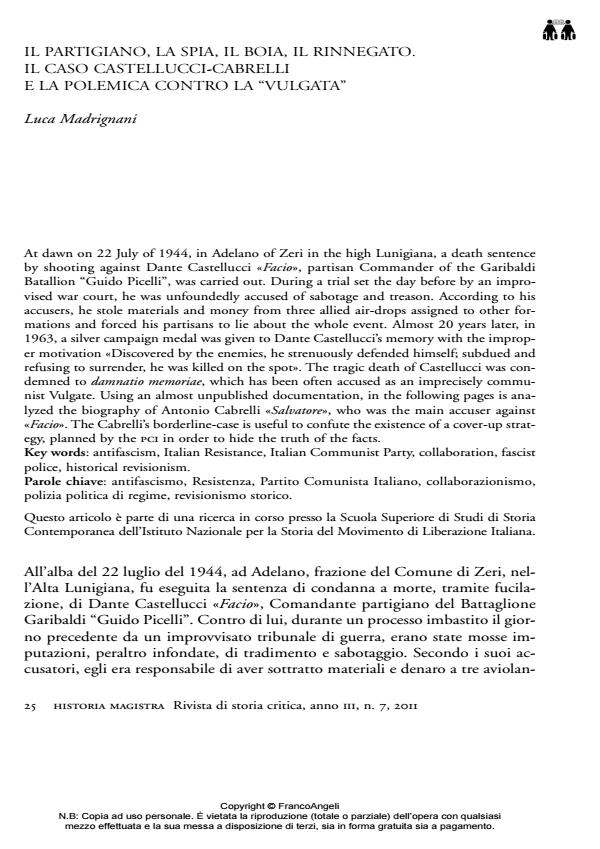Il partigiano, la spia, il boia, il rinnegato. Il caso Castellucci-Cabrelli e la polemica contro la "vulgata"
Journal title HISTORIA MAGISTRA
Author/s Luca Madrignani
Publishing Year 2011 Issue 2011/7
Language Italian Pages 17 P. 25-41 File size 152 KB
DOI 10.3280/HM2011-007004
DOI is like a bar code for intellectual property: to have more infomation
click here
Below, you can see the article first page
If you want to buy this article in PDF format, you can do it, following the instructions to buy download credits

FrancoAngeli is member of Publishers International Linking Association, Inc (PILA), a not-for-profit association which run the CrossRef service enabling links to and from online scholarly content.
At dawn on 22 July of 1944, in Adelano of Zeri in the high Lunigiana, a death sentence by shooting against Dante Castellucci «Facio», partisan Commander of the Garibaldi Batallion “Guido Picelli”, was carried out. During a trial set the day before by an improvised war court, he was unfoundedly accused of sabotage and treason. According to his accusers, he stole materials and money from three allied air-drops assigned to other formations and forced his partisans to lie about the whole event. Almost 20 years later, in 1963, a silver campaign medal was given to Dante Castellucci’s memory with the improper motivation «Discovered by the enemies, he strenuously defended himself; subdued and refusing to surrender, he was killed on the spot». The tragic death of Castellucci was condemned to damnatio memoriae, which has been often accused as an imprecisely communist Vulgate. Using an almost unpublished documentation, in the following pages is analyzed the biography of Antonio Cabrelli «Salvatore», who was the main accuser against «Facio». The Cabrelli’s borderline-case is useful to confute the existence of a cover-up strategy, planned by the pci in order to hide the truth of the facts.
Keywords: Antifascism, Italian Resistance, Italian Communist Party, collaboration, fascist police, historical revisionism
Luca Madrignani, Il partigiano, la spia, il boia, il rinnegato. Il caso Castellucci-Cabrelli e la polemica contro la "vulgata" in "HISTORIA MAGISTRA" 7/2011, pp 25-41, DOI: 10.3280/HM2011-007004